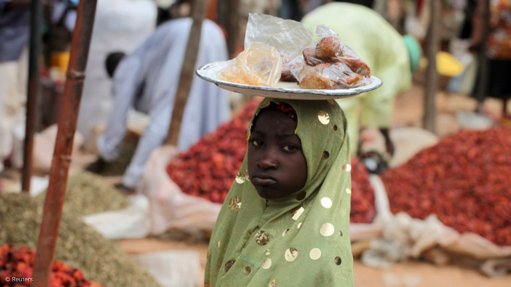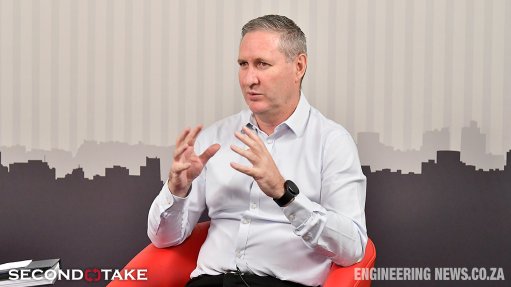Carbon calculator assists in determining carbon footprint
The South African Fruit and Wine Industry Con- fronting Climate Change initiative, which is in its second phase, updated its carbon calculator this year to assist members in the agriculture sector in calculating their carbon footprint.
The new carbon calculator on the Confronting Climate Change website complies with PAS 2050, which outlines the assessment of the life cycle of greenhouse-gas (GHG) emissions of goods and services.
“The carbon calculator enables a business to measure the impact it has on the environment,” says Confronting Climate Change project manager Shelly Fuller.
She adds that the initiative, which focuses on citrus growers, stone fruit, pome fruit, table grape growers, wine growers and winemakers, was started in 2008 to encourage information sharing and to ensure there is a usable tool available to growers with which they can accurately calculate their carbon footprint.
Fuller adds that agriculture is one of the most susceptible industries to climate change.
“Electricity diesel- and nitrogen- based fertilisers are the biggest contributors to a carbon footprint in the agriculture industry.
“Synthetic nitrogen is espe- cially harmful to the environment. When it is spread onto soil, it breaks down and releases nitrous oxide, which is a power- ful GHG, resulting in a large amount of carbon emissions,” she says.
Fuller notes that electricity often comprises 60% to 80% of an agricultural company’s or farm’s carbon footprint, owing to South Africa’s dependence on coal-fired power.
“When calculating a company’s carbon footprint, we look at yearly consumption figures of the kilowatt hours of electricity used, the litres of diesel used by vehicles and equipment and the amount of fertiliser used. We have documents that we send out to farmers to guide them through a step-by-step process regarding the type of data they need to calculate their carbon footprint,” she says.
Fuller explains that calculating a carbon footprint is a com- plicated process that is mostly based on information that most businesses already track – electricity, diesel, fertiliser and packaging products are expensive, so they have to be documented in a financial system.
She points out that, as farmers move through the supply chain, their carbon footprint can be recorded to include post harvest or processing activities as well as transport and distribution to international ports.
“Packaging is usually a signi- ficant contributor to a carbon footprint because the material is used once only and there is often no way to track if the packaging gets recycled.
“The Confronting Climate Change initiative allows industry members to track their carbon emissions from the initial stage to delivery at international ports,” Fuller says.
“The first phase of the initiative was aimed at introducing topics and related impacts of climate change to the South African fruit and wine industry. This was also the introductory phase, where we developed the first version of our online carbon calculator.
“Initially, we had many infor- mation sharing and training workshops for the local farmers and winemakers to get them on board and using the freely available tool,” she says.
Fuller adds that, currently, calculating one’s carbon footprint is voluntary.
“It is not yet mandatory to provide a carbon footprint for export products. However, this year, local and international retailers are increasingly encouraging disclosure because they realise that carbon footprinting is the key measurement of sus- tainability and efficiency,” she notes.
Fuller states that, during the second phase of the initiative, the focus is on smaller workshops to assist farmers and other key players in the agriculture industry on an individual basis.
“Larger workshops were held during the first phase, but we have realised that a more personal approach is required. Currently, we are focusing on training and building capacity in the industry, as these improve the project’s sustainability and allow the skills to be transferred to industry members and grower associations rather than being kept within an external consultancy.
“Our goal is to train industry members and exporters to use the carbon footprint calculator to improve their efficiencies and pass on the knowledge to other industry members,” she concludes.
Comments
Press Office
Announcements
What's On
Subscribe to improve your user experience...
Option 1 (equivalent of R125 a month):
Receive a weekly copy of Creamer Media's Engineering News & Mining Weekly magazine
(print copy for those in South Africa and e-magazine for those outside of South Africa)
Receive daily email newsletters
Access to full search results
Access archive of magazine back copies
Access to Projects in Progress
Access to ONE Research Report of your choice in PDF format
Option 2 (equivalent of R375 a month):
All benefits from Option 1
PLUS
Access to Creamer Media's Research Channel Africa for ALL Research Reports, in PDF format, on various industrial and mining sectors
including Electricity; Water; Energy Transition; Hydrogen; Roads, Rail and Ports; Coal; Gold; Platinum; Battery Metals; etc.
Already a subscriber?
Forgotten your password?
Receive weekly copy of Creamer Media's Engineering News & Mining Weekly magazine (print copy for those in South Africa and e-magazine for those outside of South Africa)
➕
Recieve daily email newsletters
➕
Access to full search results
➕
Access archive of magazine back copies
➕
Access to Projects in Progress
➕
Access to ONE Research Report of your choice in PDF format
RESEARCH CHANNEL AFRICA
R4500 (equivalent of R375 a month)
SUBSCRIBEAll benefits from Option 1
➕
Access to Creamer Media's Research Channel Africa for ALL Research Reports on various industrial and mining sectors, in PDF format, including on:
Electricity
➕
Water
➕
Energy Transition
➕
Hydrogen
➕
Roads, Rail and Ports
➕
Coal
➕
Gold
➕
Platinum
➕
Battery Metals
➕
etc.
Receive all benefits from Option 1 or Option 2 delivered to numerous people at your company
➕
Multiple User names and Passwords for simultaneous log-ins
➕
Intranet integration access to all in your organisation

















